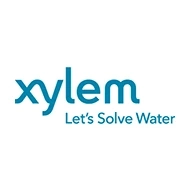Mining water treatment in Australia is a must since the planet is facing a water resources crisis. Population increases and climate change are changing the balance of water demand and supply. Predictions have stated that by 2030 the world’s total population will be over 8.1 billion. Companies are coming up with efficient water management and treatment technologies to control water crisis. With water being the most important resource in all quarrying and mining developments, it can be abused and used. With hard rock mines using water in all the steps in the mining process, working with such large water volumes present a lot of risks.
Management of water for sustainable mining
There has been a renewed public debate in the mining industry in recent years due to strong sentiment from the public on social and environmental issues surrounding the mining industry. While water is scarce, it can be managed well to meet industrial needs.
Tackling water pollution
Water protection should remain the highest goal of a mining company once a mine is in operation. Water protection should be a priority even if it means reduced production of minerals. Adopting this ethic is the only way mining companies can ensure that the dreams of mining don’t turn into a nightmare of poisoned rivers and streams. Water pollution caused by mining includes metal contamination, acid mine drainage and increased levels of sediments in streams. Changes in technologies, laws and attitude have begun addressing some of the threats posed by development of minerals. However, there are still a lot of areas in mining regulations and practices that need to be addressed by some of the most advanced mine water treatment technologies.
Some of the accidents that have occurred include massive loading of sediments into fish-bearing streams, non-compliance with wastewater and solid waste handling plans, the building of roads with waste rocks that generate acids, and repeated violations of standards of water quality. These accidents can be avoided by mining corporations. These corporations should ensure that the best pollution prevention strategies are used in cases where it is possible to manage the risks. Another question that needs to be raised is to whether there is a need to recognize that in some areas, mining shouldn’t be allowed to take place because the identified risks to other resources are too great. In most cases, many of these potential negative impacts can be avoided.
Sustainable water management
There is increasing completion for the usage of water within the mining industry. Steps towards a sustainable mining industry should involve promoting the use of poor-grade water, usually seawater or underground water which municipality and agriculture don’t want. This recovered water doesn’t have to be first grade. A lot of mining processes can tolerate high saline water. Also, by encouraging recycling as much as possible, mining companies can move towards a zero water discharge mining site.
Preventing water pollution in mining
Apart from mining water treatment in Australia in mines, it is possible to prevent pollution of water on mine sites. The best practices can be adopted to prevent water pollution in mining.


